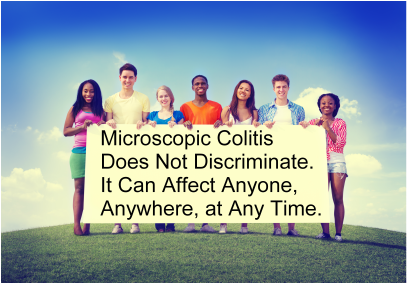What is microscopic colitis? |
Patient support |
Ways to SUPPORT MCF |
The Microscopic Colitis Foundation raises public awareness of microscopic colitis to encourage research, and to inform and support patients, caregivers, and medical professionals about the management of this condition.
The Microscopic Colitis Foundation is a public charity classified by the IRS as a 501(c)(3) organization. All monetary donations to the organization are tax deductible to the maximum extent allowed by law.
The Microscopic Colitis Foundation is a public charity classified by the IRS as a 501(c)(3) organization. All monetary donations to the organization are tax deductible to the maximum extent allowed by law.
Copyright © 2015–2024 Microscopic Colitis Foundation, All rights reserved
Disclaimer: The information contained within this site is intended solely for general educational purposes, and is not intended, nor implied, to be a substitute for professional medical advice relative to your specific medical condition or question. Anyone who chooses to use any information found here, does so at his or her own risk. Always seek the advice of your physician or other health care provider for any questions you may have regarding your medical condition. Only your physician can provide specific diagnoses and therapies. This site does not recommend or endorse any specific tests, products, procedures, opinions, or other information that may be mentioned anywhere on this site. Reliance on any information provided here is solely at your own risk.




